The biggest entertainment stories
Get our big stories about Hollywood, film, television, music, arts, culture and more right in your inbox as soon as they publish.
You may occasionally receive promotional content from the Los Angeles Times.
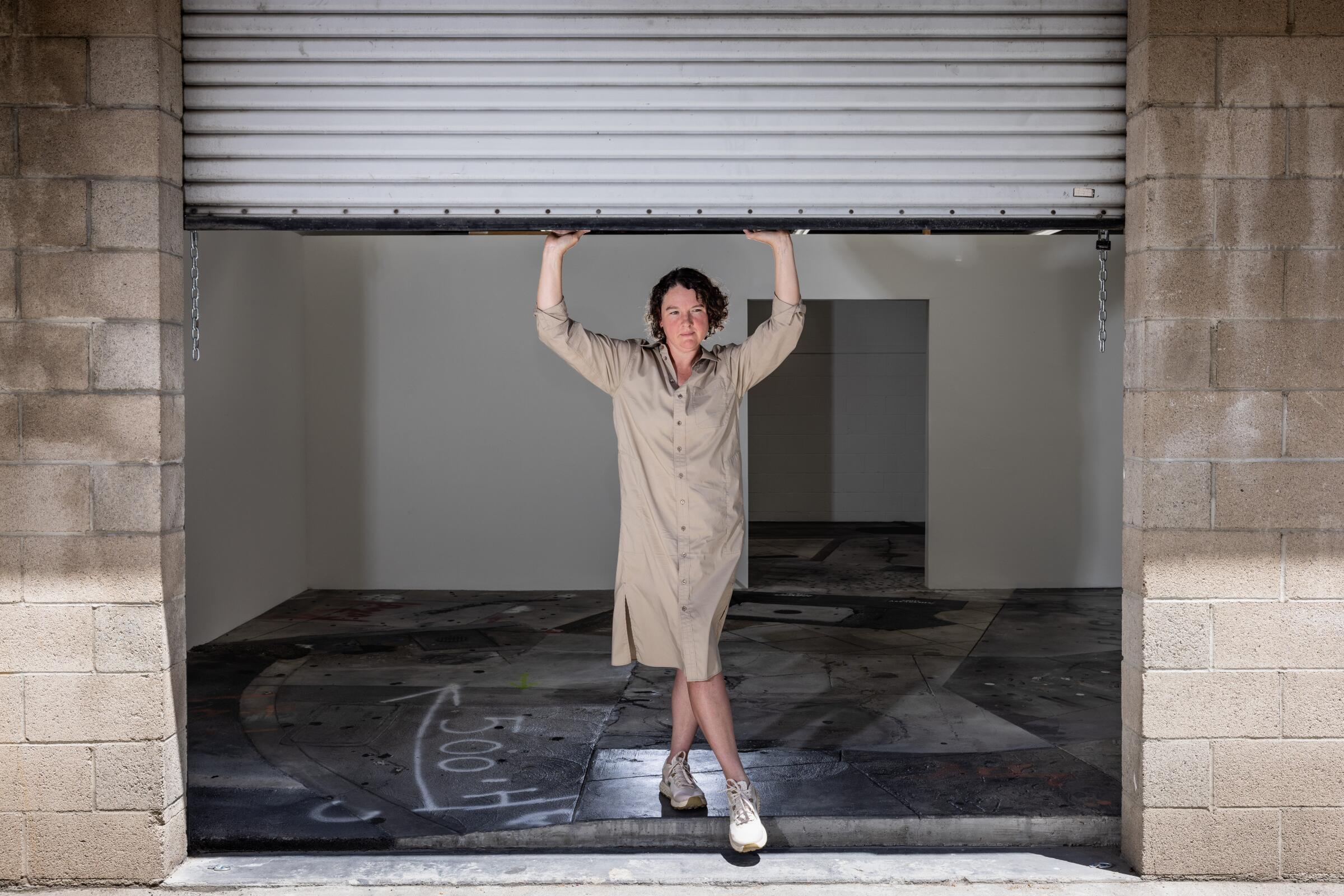
In a place as car-centric as Los Angeles, the 9,000-plus miles of sidewalk spread through the city are often overlooked and underappreciated. Over the past decade the city has launched several initiatives, from Vision Zero to Great Streets, to make Los Angeles less car-dependent and more pedestrian-friendly. Yet despite providing essential urban infrastructure, it’s estimated that close to half of the city’s sidewalks are in need of repair.
A 2021 audit by the city controller found that Los Angeles was failing in its efforts to repair sidewalks under its own “fix and release” policy, turning them back over to property owners once the repairs had been made. At the time, fewer than 1% of the city’s sidewalks parcels had been certified as repaired and released. The audit also noted that at this rate it would take 500 years to certify all of L.A.’s sidewalks.
While the cracks and crevices of the city’s sidewalks may tell a story of a failed municipal policy, they serve as inspiration for artist Fiona Connor’s latest project, “Continuous Sidewalk,” now on view at Chateau Shatto. Connor is meticulously re-creating 23 different squares of sidewalk from downtown L.A., generating an imagined map of downtown that fits within the space of her Glendale studio.
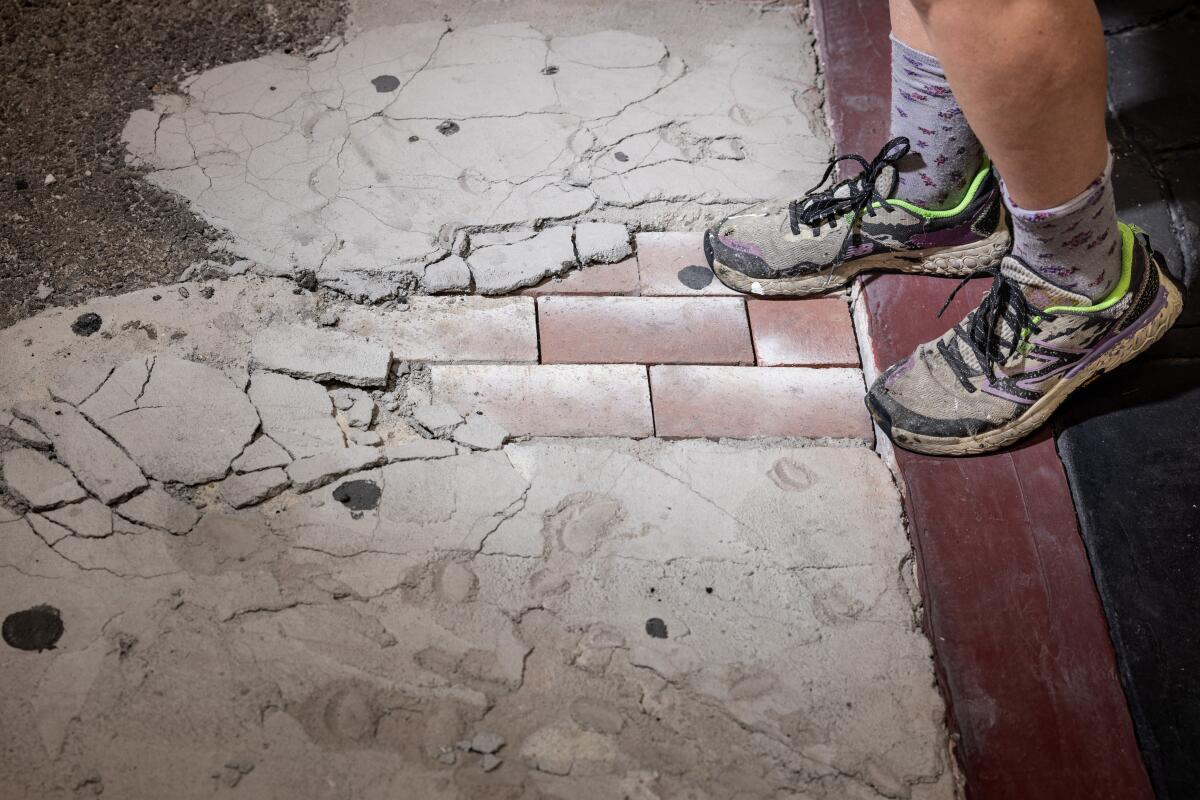
When I walked the Fashion District with Connor last summer, she had already identified the parcels she wanted to re-create after spending more time in the neighborhood while preparing a show at gallery Chateau Shatto in 2021. After giving up her car during COVID shutdowns, Connor embraced a more pedestrian lifestyle.
The sidewalks that intrigued her most in the Fashion District were the ones that revealed their layers, betraying the city’s history in a jumble of asphalt, brick, gravel and stone. “When you imagine a city, you don’t imagine it as a linear path. It’s a cacophony of different moments,” she explains. After photographing her favorite pavers multiple times, Connor collaged the mostly 36-inch-by-36-inch squares digitally to form a fictive map of downtown. They are arranged “in an impossible way,” she says. “It becomes a memory arcade dream space.”
Architect and pedestrian advocate Daveed Kapoor met with Connor early in the research and conceptual development phase to discuss the history and maintenance of L.A.’s sidewalks. Kapoor admired Connor’s archaeological approach to documenting and re-creating the parcels.
“She’s creating a palimpsest of different eras,” he says, noting that unlike L.A.’s streets, which are the city’s responsibility for upkeep, sidewalks are built and maintained by private developers.
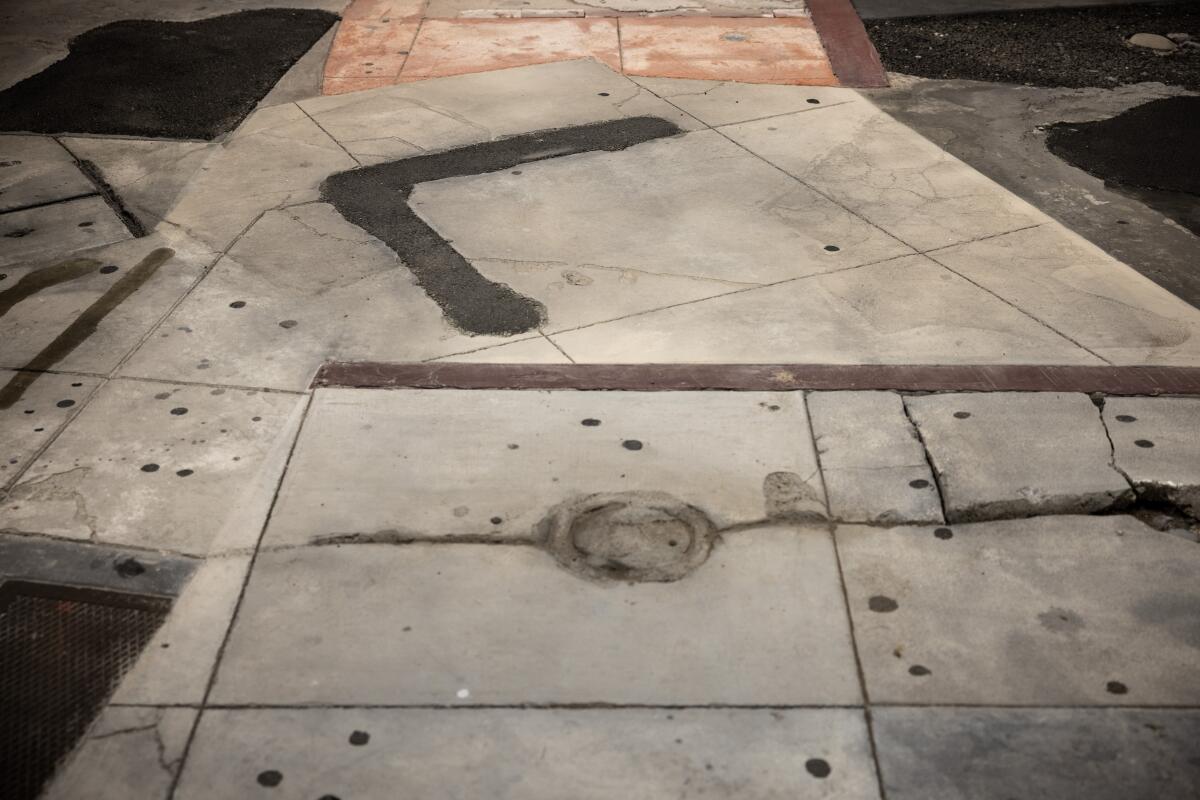
Connor’s one-to-one scale version of the sidewalk squares required a single concrete pour in her studio before she got to work painstakingly recreating the cracks, fissures, graffiti, blackened chewing gum debris, stamps and metal plates common to L.A. sidewalks. She is chronicling the detritus of urban life, the echoes of the city’s past evident in the patches, and nature’s attempt at reclamation all visible in the humble squares of concrete and asphalt.
When she first envisioned the piece, she imagined it installed in her gallery. But it quickly became obvious that the physical weight of the piece would be precarious in the nearly century-old building. “I was captivated by the idea,” says Olivia Barrett, the founder and owner of Chateau Shatto, “but concerned about the logistical elements of pouring a heavy volume of cement into a 10th-floor gallery.” Connor needed to build it in a space that was on the ground floor to support the weight, so Chateau Shatto agreed to present and manage the upcoming exhibition at her studio.
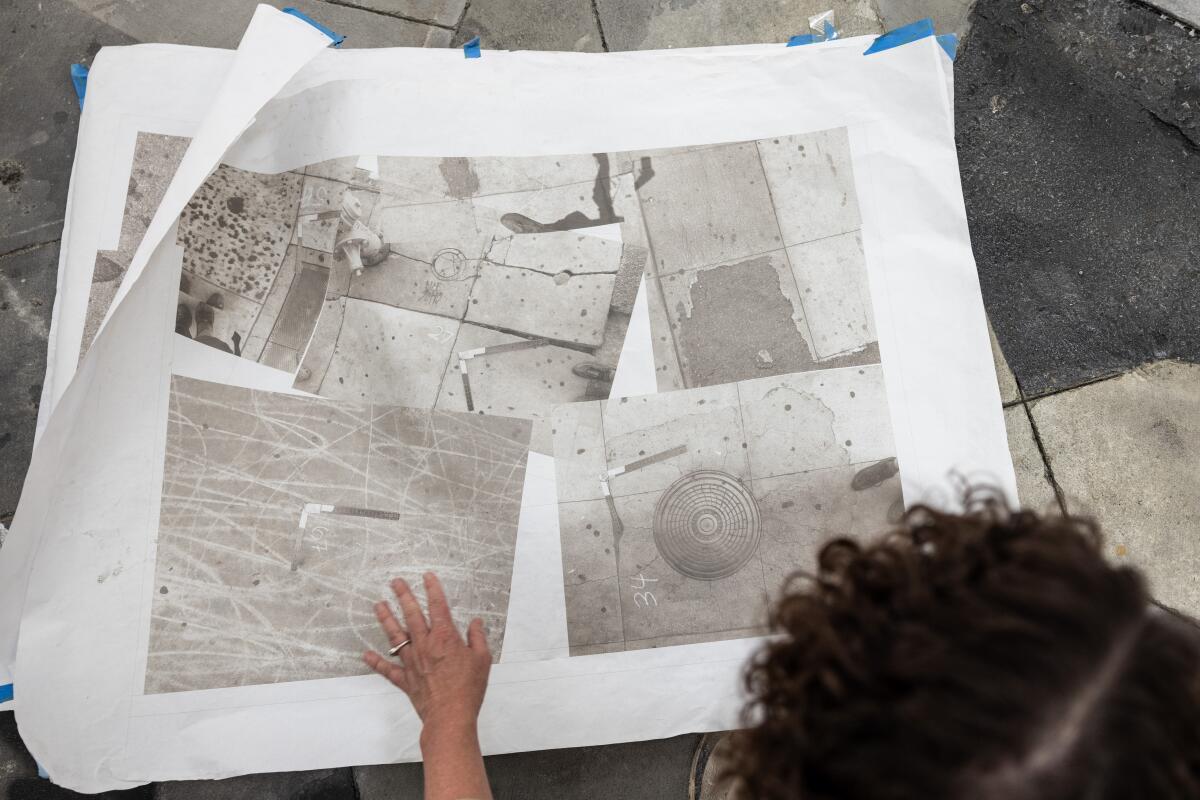
This is not the first time the more quotidian elements of city life, worn down by neglect or corrosion, have captured Connor’s attention. For several years, she’s been re-creating the doors of shuttered communal spaces in Los Angeles, New York and her native New Zealand.
Her 2022 exhibit “My muse is my memory, an archive of Closed Down Clubs” at Chateau Shatto included sculptures she had made as far back as 2018, but post-COVID they felt newly resonant. The one-to-one scale reproductions of doors from Greenblatt’s Deli, Circus of Books and Hop Louie served as a poignant reminder not just of the restaurants, bars and clubs the city had lost but the sense of community and care embodied in those spaces.
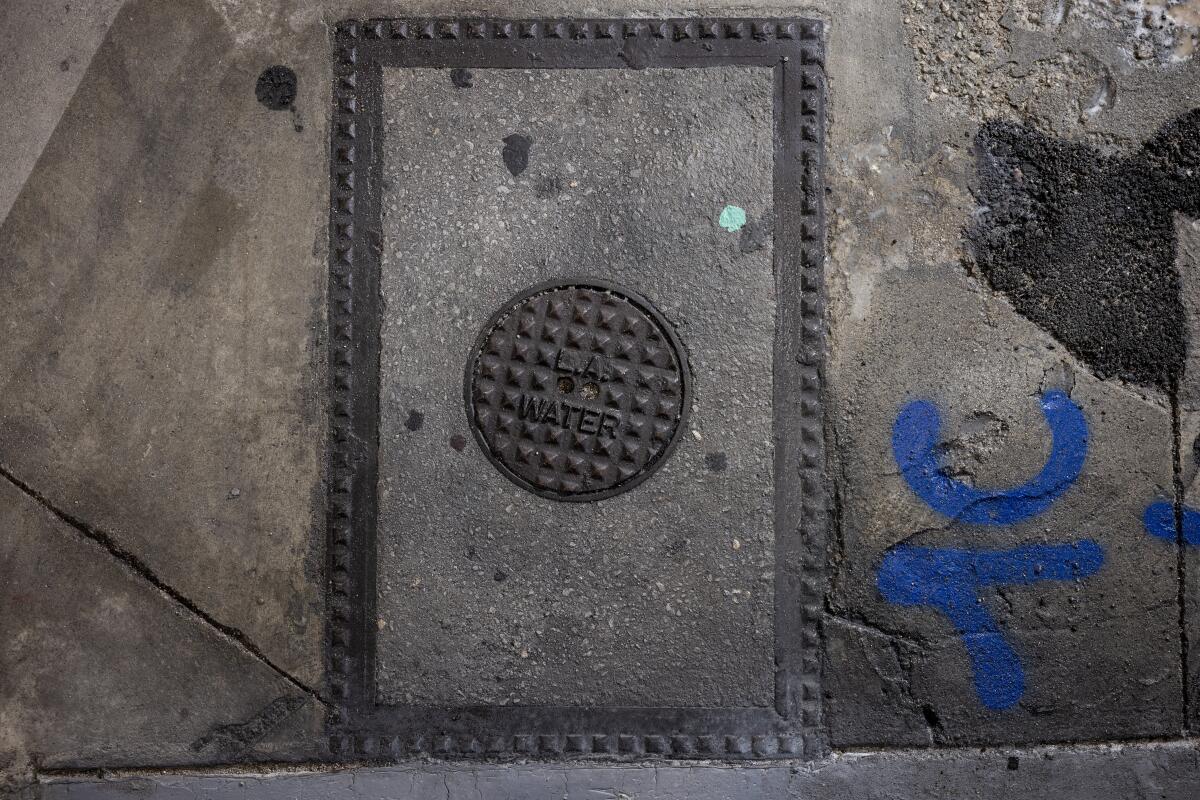
If Connor’s “Closed Down Clubs” were portals, then “Continuous Sidewalk” is a conduit. A city’s sidewalks are universal infrastructure. They are perhaps the most mundane feature of an urban landscape but critical to activating shared public spaces — socially, economically, and physically. “It’s how we get in and out of every business and home,” Kapoor says. “There’s no way to avoid them.”
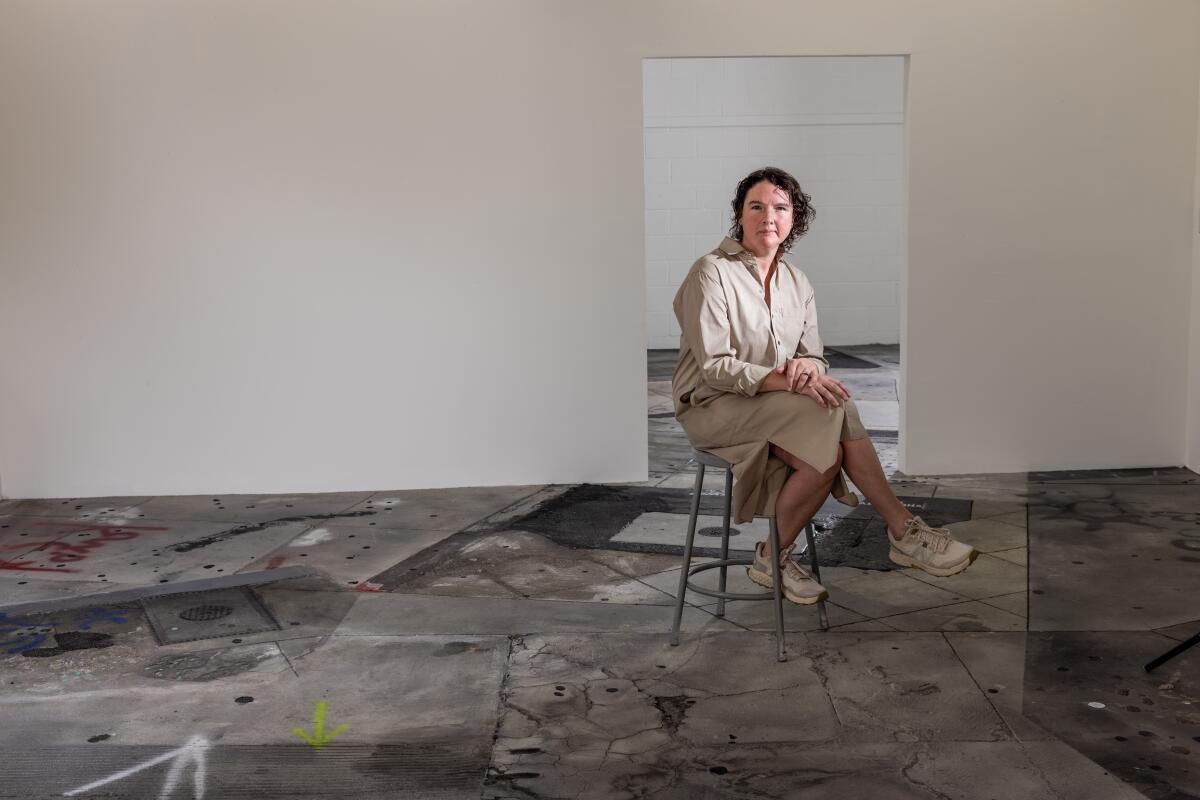
Fiona Connor: Continuous Sidewalk
Where: Chateau Shatto, 621 Ruberta Ave., #3, Glendale
When: noon to 7 p.m. Friday, noon to 4 p.m. Saturday by appointment. Through Sept. 30.
Info: chateaushatto.com
The biggest entertainment stories
Get our big stories about Hollywood, film, television, music, arts, culture and more right in your inbox as soon as they publish.
You may occasionally receive promotional content from the Los Angeles Times.